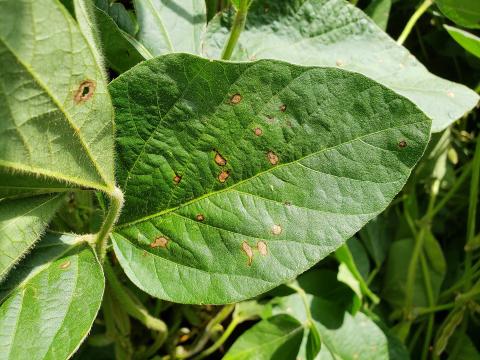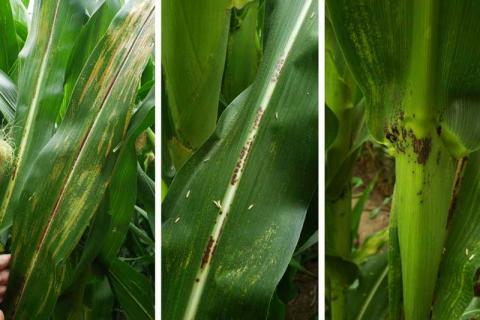Corn and Soybean Disease Update: Southern Rust, Frogeye Leaf Spot, and Phytophthora Root and Stem Rot
July 21, 2021
Following identification of southern rust, Phytophthora root and stem rot, and frogeye leaf spot in areas throughout the state, producers are encouraged to scout and be prepared to apply the appropriate fungicide treatments.
Managing Diseases Starts NOW with Seed Selection
November 19, 2020
Now is the perfect time to think about how you can minimize diseases next growing season. Planting disease-resistant hybrids and varieties may be a more economical way to manage certain diseases, reduce disease severity and reduce dependence on pesticides.
Check Stalk Quality of Corn Going into Harvest
September 16, 2020
Poor stalk quality can cause stalk lodging and breakage, leading to harvest difficulties. This could cause yield loss and create issues of volunteer corn for next year's crops due to ears lost from lodged corn.
Crop Diseases Spreading and Increasing
August 6, 2020
Southern rust continues to spread across eastern Nebraska. To date, southern rust has been reported in 45 Nebraska counties. Gray Leaf Spot, Bacterial Leaf Streak and Frogeye Leaf Spot are increasing as well.
Considerations for Foliar Fungicide Use in Corn
July 17, 2020
Fungicide use in corn has become increasingly popular for many farmers for a number of reasons. But, it becomes a more difficult decision when corn prices are low and some producers are looking for ways to reduce input costs when profit margins are narrow.
Corn Disease Update
January 8, 2020
In 2019, wet weather during the growing season favored the development of numerous corn diseases including Physoderma brown spot, bacterial leaf streak, stalk rot diseases, and ear rot diseases. This update highlights these diseases, the environmental factors that favor their development, and their management.
Puzzling Out Two Closely Related Corn, Dry Bean Diseases
October 24, 2019
Two closely related plant diseases — one in corn and the other in dry bean — have followed similar, but somewhat perplexing patterns of appearing, disappearing, and then resurging as a serious threat to crop yield. A UNL researcher looks at factors affecting the cycle and whether it can be predicted.
Crop Diseases Reported by the UNL Plant and Pest Clinic
October 18, 2019
Root, crown and ear rots lead the list of corn and soybean diseases reported in samples submitted to the UNL Plant and Pest Diagnostic Lab from October 1 to October 17.







